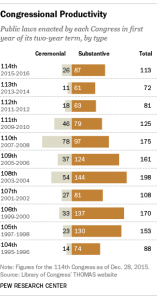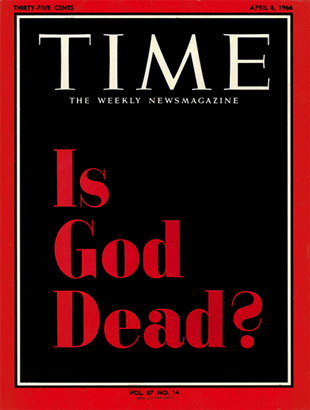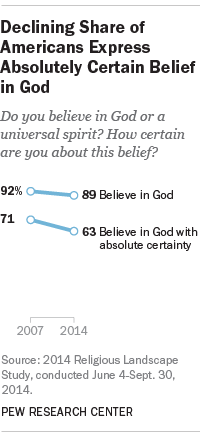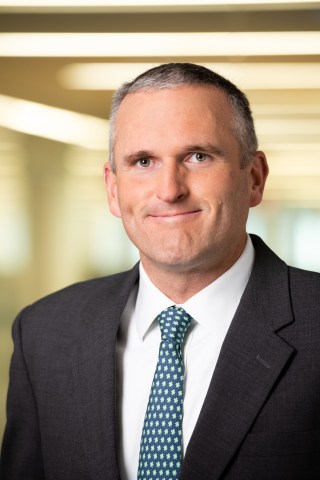

Fifty years ago this month, Time magazine published one of its most famous and controversial covers. Splashed in bold red print across a black background was a short, simple and yet intensely provocative question: “Is God Dead?”
Without providing a definitive answer, the authors of the piece, dated April 8, 1966, seemed to imply that, in many parts of the world, the idea of an omnipotent creator could be heading for history’s dustbin. Even in the United States – where, the authors acknowledged, faith in God seemed nearly universal – many churches and seminaries were slowly dispensing with the traditional notion of the divine in favor of a God who was more symbolic than real.
But a half century after the Time article was first published, a recent Pew Research Center survey shows that belief in God is strong in the United States. Indeed, according to our 2014 Religious Landscape Study, nearly nine-in-ten American adults say they believe in God or a universal spirit.

To be sure, the share of people in the United States who say they believe in the Almighty has dropped a bit recently, from 92% in 2007 (when the Center’s first Religious Landscape Study was released) to 89% in 2014. And among the youngest adults surveyed (born between 1990 and 1996), the share of believers is 80%.
In recent years, there also have been small declines in other measures of religious commitment. For instance, between 2007 and 2014, the share of Americans who say they attend church or another house of worship at least once a week has dropped from 39% to 36%. During the same period, the share of Americans who say they pray daily also has dropped 3 percentage points, from 58% to 55%.
Perhaps more strikingly, the number of people who no longer consider themselves to be part of any religious denomination or tradition has risen dramatically in recent decades. Between 2007 and 2014, for example, the share of Americans who are religiously unaffiliated jumped from about 16% to almost 23% of the adult population. However, it’s also important to point out that a majority of these “nones” (61%) still say they believe in God or a universal spirit.
As part of its argument that theism might begin to decline dramatically (even in the United States), the 1966 article posited that the need for man to worship an omnipotent creator will disappear as science increasingly explains the mysteries of the universe, and as knowledge and technology shield us from disease, starvation and life’s other harsh realities. Indeed, the Time article stated that “faith in God survived scientific attack only when churches came to realize that the religious language of the Bible is … ‘poetry-plus, rather than science-minus.’”
But recent Pew Research Center polling suggests that about seven-in-ten (68%) U.S. adults did not see a conflict between science and their own religious beliefs. And for those who see a clash, religion often takes precedence. Consider, for instance, the public’s views on the theory of evolution as outlined by British naturalist Charles Darwin more than 150 years ago. While an overwhelming majority of scientists accept Darwinian evolution through natural selection, only a third of American adults (33%) do so. Roughly six-in-ten Americans (including creationists and those who believe that life has evolved over time through a process guided by a Supreme Being) see an active and creative higher power behind the origins and development of human life.
So while the U.S. may be slightly less religious now than in the past, religion’s place in the nation’s collective consciousness has remained strong – certainly much stronger than the authors of the Time article, and most of the experts they cited, seemed to predict.

